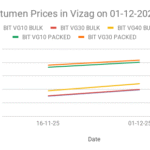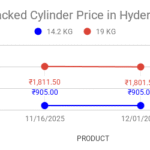Biodiesel is a transportation fuels like ethanol and diesel, Made from biomass materials. Bio fuels blend with the petroleum fuels like gasoline and diesel fuel. They are used on their own.
Uses of Biodiesel
Biodiesel is an environmental friendly fuel. Edible and non-edible vegetable oils produce the diesel. It can partly or fully replace diesel as a direct fuel. Every diesel engine powered vehicle can use this fuel on roads. (Millions of miles were logged on biodiesel in EU nations). Road construction, Mining, Farm machinery and marine engines uses this fuel safely. With new power generation capacity coming online, Biofuel makes an attractive choice to meet the regulations. Many stationary applications, Requiring exhaust emission control system, which will work well with biofuel not work with diesel fuel. With many states now mandating hybrid electric vehicles (including the fuel cell hybrid), biodiesel will make excellent reforming fuel.
Physical Properties of Biodiesel
| Colour | Deep yellow to dark brown |
| Kinematic Viscoscity at 40Deg C | 4.0-14.0 mm2/Sec |
| Sp. Gr. | 0.86 – 0.90 |
| Ash (% by mass) | <0.2 |
| Sulphur | Nil |
| Boiling Point | 240-360 Deg C |
| Flash Point (Closed up) | 120 deg C min. |
Comparison of Biodiesel vs Diesel
| SI. No. | Property | Units | BIS Limits Diesel | BIS Limits BioDiesel |
|---|---|---|---|---|
| 1 | Density at 15oC | kg/m3 | 820-860 | 860-900 |
| 2 | Viscocity at 40oC | mm2/s(cst) | 2-5 | 2.5-6.0 |
| 3 | Flash Point (Closed Cup) | oC (min) | 66 | 120 |
| 4 | Sulphur Content | mg/kg (max) | 500 | 50 |
| 5 | Carbon Residue | % mass max | 0.3 | 0.05 |
| 6 | Acid Number | mg KOH/gm max | To report | 0.5 |
| 7 | Cetance Number | min | 48 | 51 |
| 8 | Ash Content | % mass max | 0.01 | 0.02 |
| 9 | Moisture Content | mg/kg (max) | NA | 500 |
| 10 | Total Contaminations | mg/kg (max) | 24 | 24 |
| 11 | Copper Corrosion Test (at 50oC for 3 hrs max) | Rating/Class | 1 | 1 |
| 12 | Oxidation Stability at 110oC | hrs, min | NA | 6 |
| 13 | Ester Content | % mass min | NA | 96.5 |
| 14 | Methanol Content | % mass max | NA | 0.2 |
| 15 | Monoglyceride Content | % mass max | NA | NA |
| 16 | Diglyceride Content | % mass max | NA | NA |
| 17 | Triglyceride Content | % mass max | NA | NA |
| 18 | Free Glycerin | % mass max | NA | 0.02 |
| 19 | Total Glycerin | % mass max | NA | 0.25 |
| 20 | Iodine Value | gm I2/100 gm | NA | To report |
| 21 | Linolenic Acid Methly Ester | % mass max | NA | NA |
| 22 | Polyunsaturated Methly Ester | % mass max | NA | NA |
| 23 | Phosphorous Content | mg/kg (max) | NA | 10 |
| 24 | Alkali Content (Na + K) | ppm (mg/kg) max | NA | To report |
| 25 | Alkaline Earth Metals (Ca + Mg) | ppm (mg/kg) max | NA | To report |
Comparison of Biodiesel vs LDO Fuel
| Technical Specification | BIS Standard for LDO | LDO of oil Marketing companies | Biodiesel | Remarks |
|---|---|---|---|---|
| Calorific Value in Kcal/kg | 9900 – 10500 | 10300 | 9900 – 10500 | very similar to LDO |
| Ash% Mass Max | 0.02 | 0.01-0.02 | 0.01 | Lower the ash better the performance |
| Carbon Residue (Ramsbottom) on 10% residue % by Mass Max | 1.5 | 1.5 | <1.0 | lower the carbon residue better the performance |
| Density in Kg/M3 | To be reported | <890 | 870-900 | Very similar to that of LDO |
| Kinematic Viscosity @ 40 Deg.C. in cst | 5-15.7 | 5-15.7 | 4-14 | Lower the viscosity better the performance |
| Biodegradability | Poor Biodegradability | Degrades readily | ||
| Toxicity | Highly Toxic | Essentially non toxic | ||
| Fuel type | Polluting Non renewable | Clean renewable | ||
| Shipping | Hazardous | Non Hazardous Non Flammable | ||
| Total Sulphur % by mass. Max | 1.8 | 1.5-1.8 | Almost nil | Lesser the sulphur content better the efficiency and more eco-friendly |
| Water content % by volume Max | 0.25 | 0.25 | 0.05-0.20 | Lesser water content yields better effect |
| Flash Point in Deg.C Min | 66 | 66 | >120 | Higher the flash point safer the fuel & no need of explosive or storage license |
Sectors using Biodiesel
Presently our customers are using Biodiesel for the following usages:
i) Textile industries uses as coning oil.
ii) Chemical industries for usage as lubricant.
iii) Jute industries as replacement of jute batching oil.
iv) Marine industries replacing diesel by Biodiesel for fishing tra wler.
v) Mining industries for use in the heavy duty earth moving equipment.
vi) Stationery power generation industry for testing oil in boiler.
vii) Pharma and Hotel Industries are replacing diesel with bio-diesel as a boiler fuel.





